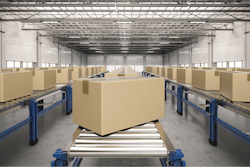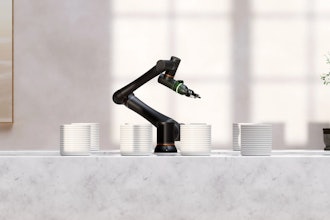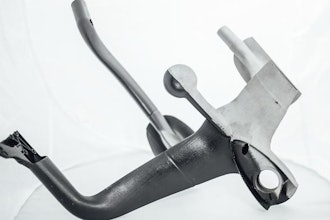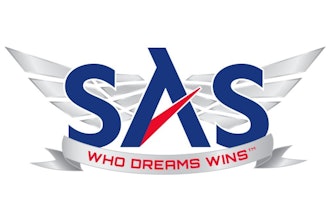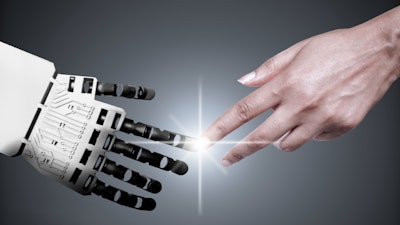
In manufacturing tech circles and businesses alike, lots of people are talking about robotic process automation (RPA). Shortly after Gartner hailed RPA " the fastest-growing segment of the global enterprise software market", it’s been described by some as a cure-all for high-volume, repetitive processes that often drive workers crazy. Is RPA the all-mighty solution to delivering unprecedented advances in productivity, efficiency and accuracy? There is a bot for everyone. Right?
The concept of a digital assistant for every worker is certainly cool, especially if it means having someone or something to take over mindless, time-consuming tasks. But in today’s artificial intelligence (AI) age, with so many automation tools from which to choose, does your enterprise really need RPA? If you believe the answer is yes, then the question becomes how to go about choosing the right RPA solution.
The answers can be found by assessing your company’s technology landscape and workforce. First, let’s answer a couple questions.
Why and Which RPA?
If you’ve done some research on RPA, chances are you’ve noticed a common word: legacy.
RPA software runs over the top of existing platforms and applications. Because it’s non-invasive, it’s good for connecting legacy systems, which often don’t “play well with others”, to modern technology stacks and cloud environments. You program RPA to do pivot operations exactly the way a human employee does: take this data out of this program, turn, and put it into a different one.
RPA has a reputation for being fragile because if any updates/changes are made to any of the apps it touches, the automation breaks. It must be reprogrammed to reflect the new workflow.
Truth is, RPA works best if you use legacy systems that do not have back-end APIs. If you have APIs that allow you to move data into and out of otherwise closed systems, you don’t need RPA. There are more flexible and intelligent automation tools for you.
If you’ve determined that you do in fact have a few legacy systems with no APIs helping them communicate with the outside world, then yes, you need RPA. Now, to determine which RPA solution is right for your business, let’s take a look at the workers within your organization, your culture and available skill sets.
Here are a few common workplace situations:
Do you have a group of people in your enterprise (and outside of IT) who love to automate away their busywork? They build Excel macros to run weekly reports and even share their homemade apps with the team. I like to call these naturally gifted worker "citizen developers." If you’re already using a Microsoft shop, Power Automate’s (formerly Microsoft Flow) RPA platform, Ui flows, will come easily to them.
And if you’re familiar with Power Apps, Power BI, and AI Builder capabilities, your citizen developers can link workflows, using pre-built connectors to orchestrate intelligent automation symphonies across Dynamics 365, Microsoft 365, G Suite, Jira and hundreds of other systems out of the box.
Microsoft just further upped its low-code/no-code game by acquiring RPA veteran Softomotive. It is offering Softomotive’s desktop automation authoring tool, WinAutomation, free to all current Power Automate customers.
Leading RPA platform UiPath has been at it for 15 years, so its many products are more mature than Microsoft’s relatively recent market entries. Both providers have a slew of quality training resources. While UiPath has the low-code/no-code StudioX bot builder, which can be helpful for citizen developers to play with and learn their way around UiPath, more substantive process automations will require your business analysts to work with more experienced developers.
These days, UiPath is differentiating itself with enterprise tools to support your automation trip, like the forthcoming Task Mining, which applies AI to capture your employees’ daily tasks and determine those that are best for automation. UiPath has also chosen to embrace its external developer community, encouraging add-on packages.
Both UiPath and Microsoft Automation solutions have strong ties into ERP systems like SAP. UiPath has a powerful library of ready to connect activities to get the most out of SAP while Microsoft's partnership with SAP in the Common Data Model has enabled systems like Dynamics and Power Automate to leverage SAP data. Both UiPath and Microsoft can scale to the size of your enterprise with all the tools to connect to many of your applications
This is emerging tech, where no one can afford to rest on their laurels. It isn’t sufficient to have robots; they must be smart robots - which is why you get the intelligent automation trend. But don’t forget where this post started: RPA is only to automate connecting your legacy system with the modern world. There are other automation technologies more worthy of a serious AI upgrade.
That said, RPA can grow in its complexity.
It starts with macros and Excel automations, then advances to programming digital assistants to copy the way humans work, moving data across multiple, unconnected apps. When you throw in OCR, your bot is dealing with unstructured data. From there, enter AI tools that analyze how people operate and determine whether/how to replicate it, like UiPath’s Task Mining. Before you know it, cognitive automation will learn from itself and start optimizing processes on its own. For the time being, however, let’s concentrate on delegating the repetitive, mind-numbing chores to the robots.
Tim Kulp is the Vice President of Innovation and Strategy at the data and software firm, Mind Over Machines.




